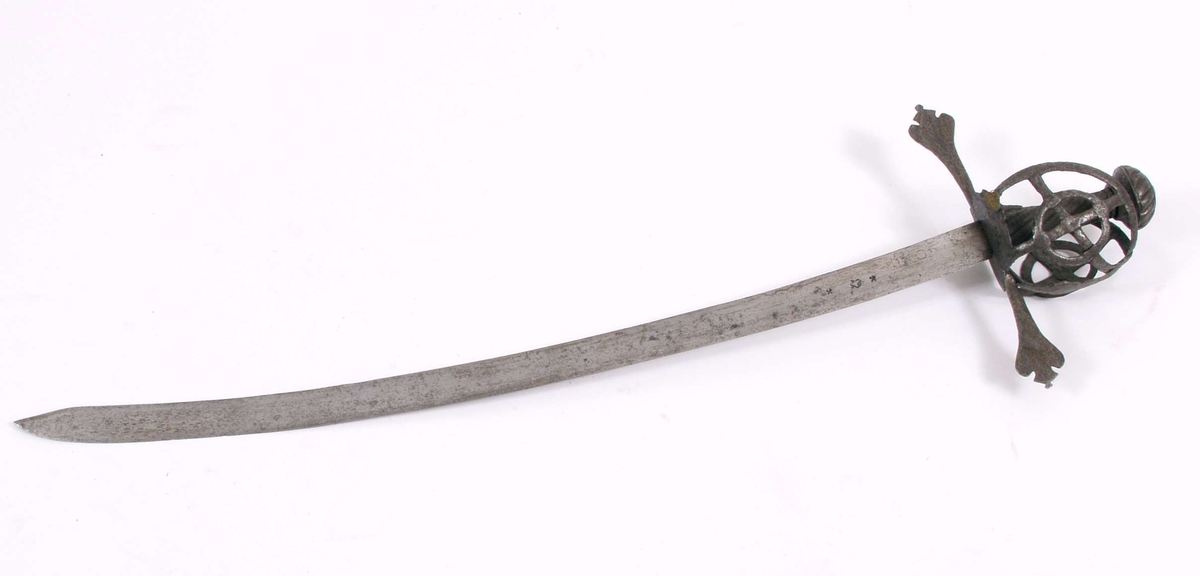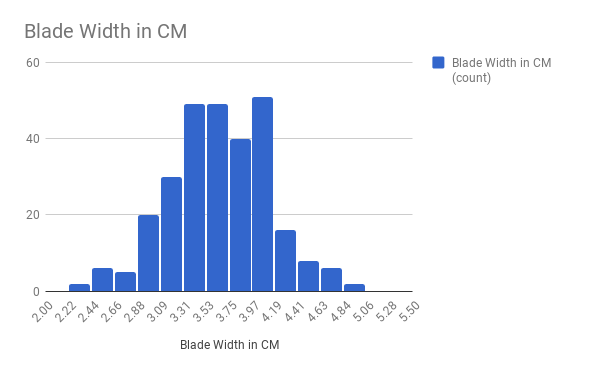The Tessak of Norway
This article shall work through some of the statistics found among the examples on the Norwegian Museum website. Upon this website there are close to five hundred examples of Tessak. Around three hundred of whom have full measurements for sword length, blade length and blade width with which to give a fair representation of the sword as found in Norway.
In 1604 King Christian IV enacted the “Den norske Landslov”. This was an update of the Norwegian laws and was partially based on the earlier laws put in place by Magnus VI Lagebøte's. A part of this law was the requirement of all farmers to own weapons in accordance with the size of their properties. Starting in the late 1580s King Christian IV had already been importing swords from Germany to supply at cost to his Norwegian subjects and with this law the importation was widely expanded. The most popular weapon was the Tessak (also known as Dussack, Dussage, etc).
The Tessak is a basket-hilted sword that had come into being in the 16th century. Originally found in Central Europe it quickly spread through Northern Europe during the century. This sword seems to be an evolution on the already popular Messer.
Per Terje Norheim has proposed the following typology for the Tessak. This typology is based upon the hilts of the Tessaks found in the museums of Norway. It is not meant to be an exact typology of all Tessaks found across Europe.
A B C D E F G H
General Overview of all swords:
There are approximately five hundred swords in the Norwegian Museum archive listed as Tessak. Of these maybe forty swords are misnamed as such and are either later sabre type swords, or earlier messer type swords. This leaves about four hundred and fifty examples of Tessaks in various forms of quality.
Overall the Tessaks roughly breakdown as follows:
Unbroken Tessaks with stats: 291 examples.
Broken Tessaks with stats: 15 examples.
Tessaks with no stats in various conditions: 151 examples.
The Tessaks with stats are further broken down into their various typologies. While I might not agree with the Typology assigned to some of the Tessaks by the museums I have not altered them.
Somewhat surprisingly based on the stereotype of the Tessak, the Type F is not the most popular type. The Type F is the generic hilt design that one thinks of when thinking of the Tessak sword.
Example of Type F Tessak. Source: https://digitaltmuseum.no/011023178150/sabel
Example of Type A Tessak. Source: https://digitaltmuseum.no/011021909351/sabel
Instead the Type A Tessak is the most popular by a large margin. There are nearly as many Type A Tessaks in the collection as there are of all other Types. There are no known reasons as to why this is the case.
Using the Unbroken Tessaks we can get the following figures for the Total Length, Blade Length and Blade Width of the Tessaks.
The Total Length of all the Unbroken Tessaks is broken down as follows:
Median Total Length: 92cm/36.22”
Longest Total Length: 115cm/45.28”
Shortest Total Length: 69cm/27.17”
The Blade Length of all the Unbroken Tessaks is broken down as follows:
Median Blade Length: 78cm/30.71”
Longest Blade Length: 101cm/39.76”
Shortest Blade Length: 55cm/21.65”
The Blade Width of all the Unbroken Tessaks is broken down as follows:
Median Blade Width: 3.7cm/1.46”
Widest Blade Width: 5cm/1.97”
Thinnest Blade Width: 2.3cm/0.91”
The Longest and Shortest lengths for both Total and Blade length are at extremes, but they do show that the Tessak had really no set standard. Rather it seems that the sword was made to the general preference of the owner.
When you look at a brake down of the Median Total Lengths of all of the typologies it is surprisingly uniform. Four of them A, B, C and E are at 92cm/36.22" with D, F, and H being just a little longer. G is an outlier by being significantly shorter at 86.75cm/34.15" in total length. There are no good reasons that I know that can explain this large difference.
From looking at these measurements it would seem that the Tessak as found in Norway would be on average longer than the general impression of the weapon. There appears to be a feeling that the Tessak was about 81.5cm/32" in total length. As we can see from the above figures, for Tessaks exported to Norway in the late 16th/early 17th century this figure is a good 10cm/4" too short. While there are Tessaks that are in the 81.5cm/32" region they are the minority. For the steel weapon named Tessak at least it would seem that the average length of the weapon needs to be revised upwards.
Breakdown per Typology
References
https://digitaltmuseum.no/search/?q=tessak
https://www.hf.uio.no/iakh/tjenester/kunnskap/samlinger/tingbok/kilder/chr4web/index.html
Per Terje Norheim (2000). "Blank Weapons." Weapons in Norway .













